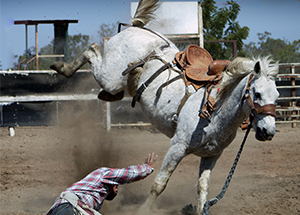Can We Learn to Be Resilient?
A conversation with Ron Price
We are all living through a time of significant turmoil when resiliency is difficult to come by.
Even when not in unprecedented times, part of being a leader is facing obstacles and creating change to keep moving forward. Resiliency is simply how you handle those challenges—but it can be the deciding factor on whether or not you fail as a leader.
It is easy to focus on the challenges and simply react, rather than continue to work toward the end goal. But the moment you begin to identify as a victim, you put yourself at risk as a leader. If you see yourself as a survivor, every obstacle is another opportunity to learn and grow.
There are certainly personalities more likely to have the talent of resiliency. These people often bounce back more quickly and don’t focus too much on what’s not working over the things that are. However, no matter our natural traits and talents, all of us can learn to be more resilient and develop it as a skill. In developing this, over time you will become a stronger leader who can inspire and teach others to develop their own resiliency.
Our emotions play a big part in developing resilience, and the knowledge of which emotions contribute or take away from resiliency is important to help develop this skill.
There are three emotions that add to resiliency: love, joy, and hope. Love creates the most energy. If you have strong, positive relationships in your life that energize you, this is a great source of resilience. Joy comes from recognizing what we’ve accomplished and taking the time to celebrate what has worked for us. Lastly, hope is the expectation that we will be able to do good things in the future. The more we cultivate these daily, the greater resilience we will have.
The four emotions that steal from resiliency, ranked from the least amount of damage done to the most, are sadness, envy, anger, and fear. We experience sadness when something doesn’t work out, and envy when we want something that somebody else has. Anger can make us impatient and upset when things don’t go our way. Finally, fear, the most damaging emotion, occurs when we worry that we will fail and subsequently let down ourselves and others.
Building resilience then becomes both an act of will and the way you organize yourself around these emotions. In addition, there are practical steps we can take:
Step 1: Self-Care
A lot of people think resiliency is simply the ability to tough it out during hard times. But that’s just not true. In actuality, if you are tough all the time, you are reducing your resiliency. You’ll burn out and begin to feel those four emotions that steal from your resiliency more acutely.
Rather, if you find a rhythm of rest and stress, you’ll actually grow stronger. It helps me to think about the routine of a bodybuilder. They don’t work out every day—they have recovery days in between the tough workouts to help their muscles rest and recover. This rhythm of stress, recovery, stress, recovery is what makes them stronger.
So you can build your resiliency in the same way with self-care. You need to think about how you manage your time: how you rest, how you eat, if you drink enough water, and if you set aside time to manage and strengthen those three emotions that promote resilience.
Step 2: Have a Clear End Goal
What is your goal? Where are you going?
It may not happen exactly the way you planned it; as I’ve said, leadership is never a straight and easy path. But having a clear vision of where you want to go will help you to keep going.
I often think of past family trips as an example. I am so zeroed in on our destination that I am pulled toward it. When issues like flat tires, empty gas tanks, or crying children challenge me, I can keep going because I know my end destination.
Step 3: Prioritize and Organize
We can never do everything as leaders, so we have to commit ourselves to prioritize and organize the projects and goals that matter most.
Think about the one or two most important things for you to work on today, or this week, or this month. Focus on those one or two things, and practice the discipline to let the other smaller issues fall to the wayside.
I love this statement from an old preacher: “The main thing is to keep the main thing the main thing.” This sums it up so perfectly. If we can keep focusing on what matters most to us and ignore distractions, we can build resilience.
Step 4: Keep Learning
Finally, study other skills that have helped leaders to lead themselves. If you develop more personal accountability skills, more self-management skills, more goal achievement skills, or more adaptability, all of these skills serve and overlap with each other to help build resilience. And resilience is the one that paves the way to your greatest victories.
With the knowledge of how your emotions affect you and these four practical steps, now ask yourself: what could I accomplish today if I put a little more effort into my goals and projects, if I don’t back down because I can see the prize on the other side?
If you approach each day like this, over time the accumulated benefits of that resilience will make you the best possible leader that you can be.
For more tips on developing Resiliency, listen to the full episode of The Complete Leader podcast: #66, Getting Back on the Horse. And don’t forget to subscribe to the podcast for regular leadership insights and actions.


